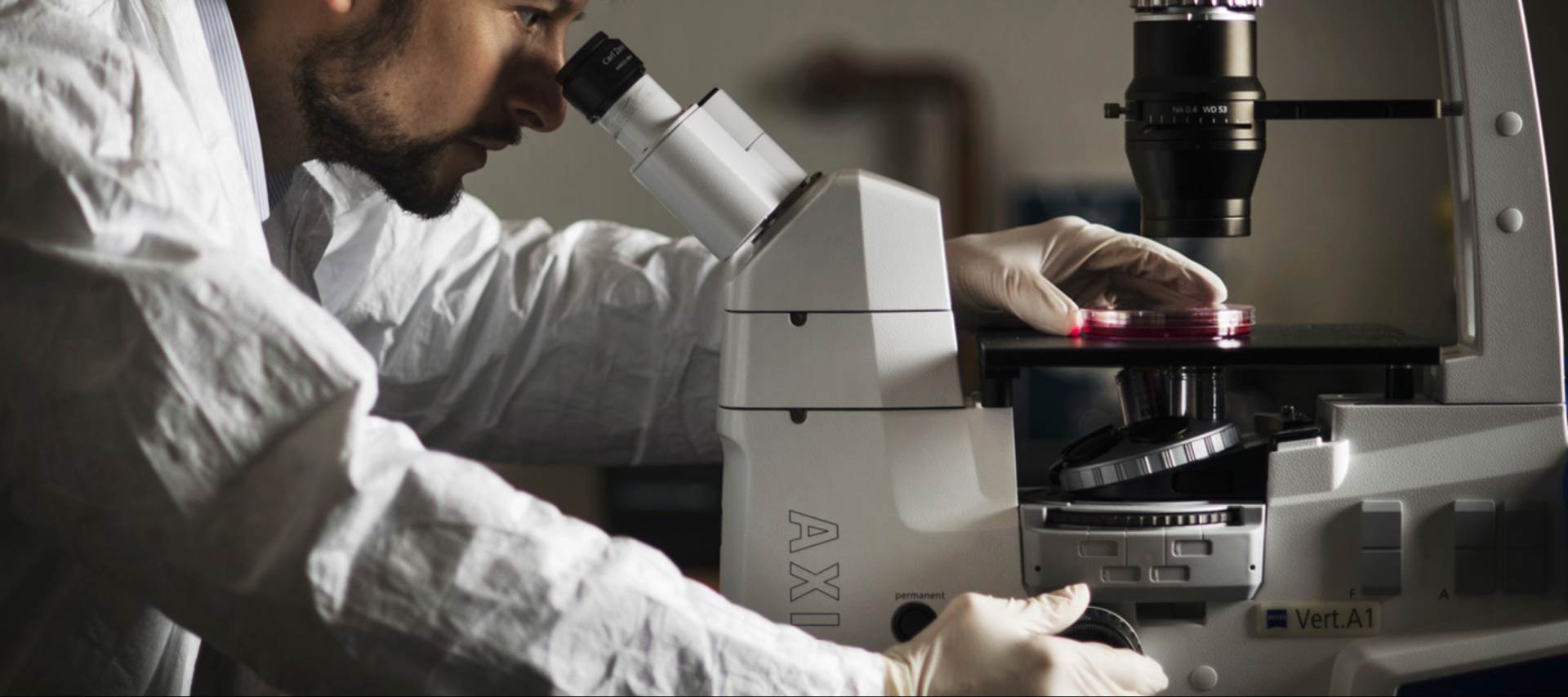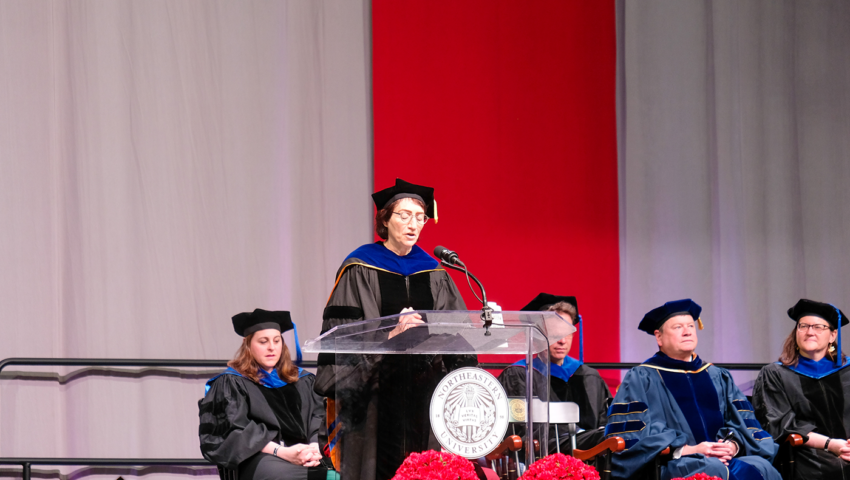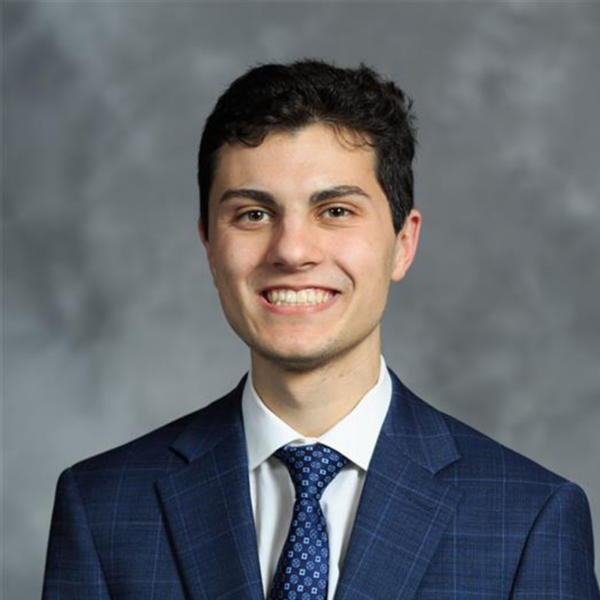
People
We are teachers, leaders, researchers, advisors, business professionals and students. Welcome to Northeastern’s College of Science
News
Northeastern’s Boston Campus Hosts Inaugural Magnetics Workshop
On May 7, 2025, Northeastern University’s Boston campus hosted the inaugural NU Cross-College Magnetics Center Workshop in the Raytheon Amphitheatre at the Egan Research Center. The event brought together approximately 60 participants from NU’s Boston, Burlington, and Portland campuses.

The NU Cross-College Magnetics Center, composed of 22 members from the College of Science, the College of Engineering, the Kostas Research Institute, and the Roux Institute, is dedicated to advancing magnetic science and technology through interdisciplinary collaboration and innovation.
The workshop featured four insightful tutorials by Laura Lewis, Ryan Koppes, Alberto De la Torre Duran, and George Hadjipanayis, along with two engaging technical talks from Xufeng Zhang and Paul Stevenson. A total of 29 posters were showcased across two sessions, with six Best Poster Awards selected by a panel of five judges.

A lively and thought-provoking career panel, moderated by Kin Chung Fong, featured discussions with panelists Greg Fiete, Zac Perry, Paul Stevenson, and Srinivas Tadigadapa.
This successful event was made possible through the generous support of the College of Science, the College of Engineering, AJA International, Quantum Design, and the Journal of Magnetism and Magnetic Materials.

How a Northeastern astrophysicist fills in the blanks of the universe
Northeastern University astrophysicist Jonathan Blazek attributes his interest in the universe to his father, a native of rural Montana who loved that Big Sky country allowed him to simply look up at night and observe the stars, planets and galaxy.
Blazek “didn’t have quite the same night sky.”
“I grew up in Chicago,” Blazek says, wryly.
Is it any wonder then that Blazek’s work involves studying 95% of the universe that we cannot see?
“All the stars, all the gas, all the dust, all the galaxies are made up of this 5% that we can see, and we have to use that to infer the rest,” says Blazek, assistant professor of physics at Northeastern. “My research is focused on making this connection. How do we take the galaxies that we see and the properties of the galaxies that we see and use that to study the universe as a whole?”
Most recently, Blazek has focused on two main research questions: Where do galaxies form? And what are their shapes?
Read more from Northeastern Global News.
Photo by Matthew Modoono/Northeastern University
2025 College of Science Commencement Address by Dean Hazel Sive
Honored graduates, honored guests, esteemed faculty and staff: Good day!
I’m Hazel Sive, Dean of the College of Science at Northeastern University and welcome! This is truly, a wonderful celebratory moment, the culmination of so much hard work with these well-deserved, important awards. Warmest congratulations to each of you Science Huskies graduating! Let’s have a round of applause for each graduate!
Your family, supporters and friends have been along for the journey of your degree! Please join me in thanking them! Congratulations Science Husky families!
Each of you graduating today has been accompanied by your teachers, mentors and advisors. Please join me in a vote of thanks to everyone responsible for your education!
Today, I want to encourage you. I want to encourage you that your future is sound, your opportunities many. When you came into this elite University, I told you that a degree in science is a stepping-stone to anywhere, and a wise investment in your future. That is true in any year, in any economic landscape. It is true today and will be true in years to come.
Your education in the College of Science has given you key knowledge in your area, it has given you problem-solving skills, confidence, a creative, can-do spirit, an ethical and respectful mindset, experience as a responsible worker and as a spokesperson for the Good Power of Science. You have these flexible skills in hand, and they will allow you to take advantage of many career opportunities, and to pivot as market employment shifts. Now and for always, you are among the most employable people on the planet. Well done!
At this time, I know you’re choosing your next steps – some of you have chosen, others of you are thinking hard. You have great freedom to decide where to put your talent and your time.
I want to encourage you that your future is in your control, and it will be exciting, exhilarating, interesting, scary, unsettling, empowering, and OKAY. You will find next steps in education, in a job, in a career.
Today, I’m not going to tell you to change the world, to follow your passion or to be resilient. Lots of other people who speak to you this weekend will tell you those things, and they are good words for you to consider.
Rather, I want to encourage you today to think in a different way: to think about finding a path forward through Scaling your Future. The word Scale has lots of meanings in English, and for our conversation today, scale means how wide an impact you want to have, how many people you would like to affect in your future, in your future career, whatever that may be.
Why is scale important? Because in my view, your work and career should not only be interesting and useful, but should also be comfortable, for your health and satisfaction; and figuring out a scale of work that fits who you are is a most useful thing to consider.
I’m going to get us thinking about Scaling your Future by telling you two stories, stories that have influenced me, and that reference my home country of South Africa.
The first story is called The Egg Man. When I was a little girl, far away in Johannesburg, South Africa, the Egg Man would come to our house. We thought he must be unhoused, and he always carried a large cloth bag and battered suitcase. He had a burlap sack turban and few teeth. He would open the suitcase and ask my mom if she wanted to buy some eggs. The smell indicated that the eggs were very far from fresh and my mom said no, but would he like some food?
Mom invited him in, but he preferred to sit on the back steps, and I would sit beside him. He did not talk much, but would show me his toothbrush, a stick with frayed edges and how he used this to clean his remaining teeth. I was not alarmed by the Egg Man because my mom was not. She saw his need and could help. That was all.
My mom would make him two very thick sandwiches, peanut butter and jam and put these and two oranges in a brown paper bag. She brought this out with a large tin cup of steaming hot tea, and he started in on a sandwich and the tea while I sat beside him.
When I thought about this story recently, I realized why it’s such a strong memory – it was a small scale of assistance my mom could give, but it made a large scale of immediate difference to one person. The story of the Egg Man remains for me a paradigm that every scale of engagement is important.
None of you will have heard of the Egg Man before. But my next story spans a huge scale and will likely have parts familiar to most of you, that are very personal to me. It’s an empowering, important story all about Epilepsy and the Good Power of Science.
Epilepsy is the most common neurological disorder, actually a set of disorders, that affect 1% of earth’s population or 80 million people. You may be affected or know someone who is. I know about this very well, because my dad had severe epilepsy and it was a large part of my childhood.
Now, epilepsy involves seizures that happen when nerve cells in your brain, called neurons, that normally send out carefully controlled signals, suddenly send an uncontrolled burst of signals to the body, that cause uncontrolled movements.
In ancient times epilepsy was attributed to punishment by the gods or possession by evil spirits, and until recently, affected people were greatly discriminated against. Even today, there is fear and challenge associated. Two things changed thinking around the disorder: one is the brilliant scientific research that has opened understanding of how our nervous systems work, and the second is identification of effective medicines that combat seizures.
My Dad’s seizures punctuated our family and my childhood. Dad was very kind, and smart, but his seizures were terrifying. Sometimes they happened in public, while we were enjoying burgers in a restaurant, and one time while our family was watching a movie in Johannesburg’s biggest theater.
The worst part was that no-one in my family would discuss what was wrong. There was no internet to ask in those days, but I found some information in the school library and told my mom that I thought Dad had epilepsy. It was the first time the illness had been openly named in our family.
Before I was born, my parents had journeyed to Boston, to the Massachusetts General Hospital here to get my Dad treatment. He was prescribed a mixture of pills that he took for decades. But the pills only partly fixed his seizures and made him a sleepy, dulled person to whom words came with difficulty.
When my Dad was in his seventies, he switched to a new doctor who changed his medicines. There was something new to prescribe. And just like that, amazingly, Dad’s seizures were controlled. And suddenly, he could think and talk easily. It was like a curtain had opened and the person who was really my Dad was revealed. He was funny and could express his opinions easily. He asked me about the research I did. It was absolutely wonderful, and a wonderful demonstration of the power of research.
The understanding that seizures are caused by bursts of overactive nerve cells took millions of hours of scientific research. Neuroscientists (and some of you are trained in this area) had to understand what neurons are, how they communicate and how they coordinate their activity in the brain.
Every dollar supporting the research has been worth it.
In parallel, medical doctors, and scientists including biologists, chemists and physicists began searching for anti-epileptic medicines. Anti-epileptics target the complex machinery by which neurons send and receive signals. One of the early medicines that my Dad took was called phenytoin – still marketed as Dilantin, which blocks a channel whereby sodium moves out of neurons. The challenge is to get medicines that dampen neuronal activity and suppress seizures, without the side effects like my dad’s. Over many decades new anti- epileptic medicines have been developed, none perfect, but some really effective. It’s a huge triumph of scientific research.
The scale of the impact involved in this story is complex. On one hand the scale was small but deeply important to my Dad and our family; on the other hand tens of millions of affected people have been helped, a huge scale.
Importantly, the story is unfinished, because for one third of people affected by epilepsy, 27 million people, existing medicines do not help at all. For these people with presently untreatable epilepsy, there are millions more hours of research needed. Today, we must have an unwavering commitment to perform crucial research that leads to crucial solutions for this and other disorders.
The research dollars are small, and the impacts are immense.
And now, what about you? What scale in your career might be comfortable for you? You don’t need to answer now.
In my own career, I’ve been committed to educating students, to performing important research and to helping run great universities. I’ve taught around 10,000 students total in my classes, and in my own research group, I’ve supervised hundreds of students. I’m most comfortable with the scale of one at a time. Even in a large class, I try to have 300 individual conversations with each student. That scale is comfortable for me – perhaps it goes back to the Egg Man, so I may contribute directly, individually, usefully.
With the notion of scale in mind, you can explore your interests, and be open to new pathways that will reveal themselves as you walk along your lives. I’d encourage you to draw on your excellent training in the Good Power of Science, folding in consideration of the scale at which you might want to engage. Any scale that is comfortable is fine, and a great start to making the contribution you want to, to give you a meaningful path forward.
I’ll conclude with words of encouragement about working at small scale from the great American poet Emily Dickinson:
If I can stop one heart from breaking I shall not live in vain;
If I can ease one life the aching,
Or cool one pain,
Or help one fainting robin Unto his nest again,
I shall not live in vain.
I’m confident that you will find your unique, interesting, useful pathway, at a scale that is comfortable.
I’m confident that you will take your excellent Northeastern University training, and let it help you move forward.
I’m confident that you will be wonderful, empowered Science Huskies forever. Congratulations once again!
Defining Excellence in Science and Leadership: Dillon Nishigaya’s Northeastern Story
For Dillon Nishigaya, a biology major with a minor in health sciences entrepreneurship from San Jose, California, being selected as the College of Science student speaker is more than just an honor.
“I am incredibly honored to be selected as the COS student speaker,” Nishigaya says. “I am very proud to represent the College of Science, and this will definitely be a highlight of my undergraduate experience.”
Growth Through Mentorship and Friendship
When reflecting on his growth at Northeastern, Nishigaya emphasizes the importance of relationships and expanding his horizons.
“I have grown in a multitude of ways during my time at Northeastern,” he explains. “I have had the opportunity to learn from some outstanding mentors and faculty at the university. I have also made some incredible friendships that I will cherish throughout my life.”
“I will greatly miss all of the amazing people and mentors that helped me along my journey,” he reflects. This appreciation for the human connections forged during his college years speaks to the supportive environment he found at Northeastern.
Perhaps most significantly, Nishigaya learned to embrace ambition.
Global Experiences and Lifelong Memories
Nishigaya’s Northeastern journey began with the N.U.in Program in Thessaloniki, Greece, setting the tone for a college career defined by global exploration and scientific discovery.
His co-op and internship experiences took him across the country and around the world. At Sana Biotechnology in South San Francisco, CA he developed novel allogeneic CAR-T cell therapies. Multiple collaborations with NASA brought him to the Ames Research Center, where he contributed to space biology research and mentored research associates through the Space Life Sciences Training Program.
Nishigaya’s NASA work continued with the Rodent Research-20 mission in Sarasota, Florida, conducting dissections on model organisms sent to space, and at NASA’s National Space Radiation Laboratory in Long Island, New York, focusing on oxidative stress and immune dysregulation.
His scientific pursuits extended to Harvard’s Department of Stem Cell and Regenerative Biology, where he conducted stem cell research, and Boston Children’s Hospital, completing observerships in vascular anomalies and pediatric dermatology.
Even his entrepreneurial interests took him abroad, interning with Stoelzle Glass Group in Vienna, Austria, where he focused on global business development.
“I have been able to travel all around the world, excel at my work experiences, and make lifelong memories with my friends,” he shares. This combination of global exploration, professional development, and personal connections has shaped his college experience.
Looking Forward While Appreciating the Present
With medical school applications on the horizon after graduation, Nishigaya takes a moment to share advice with incoming students that reveals his perspective on the college experience.
“I would tell my first-year self to enjoy every single moment and experience as much as possible,” he advises, emphasizing the importance of being present during these formative years.
When asked to describe his graduating class in three words, Nishigaya chose: innovative, inspiring, and dedicated—qualities that have clearly defined both his classmates and his own approach to his Northeastern journey.




